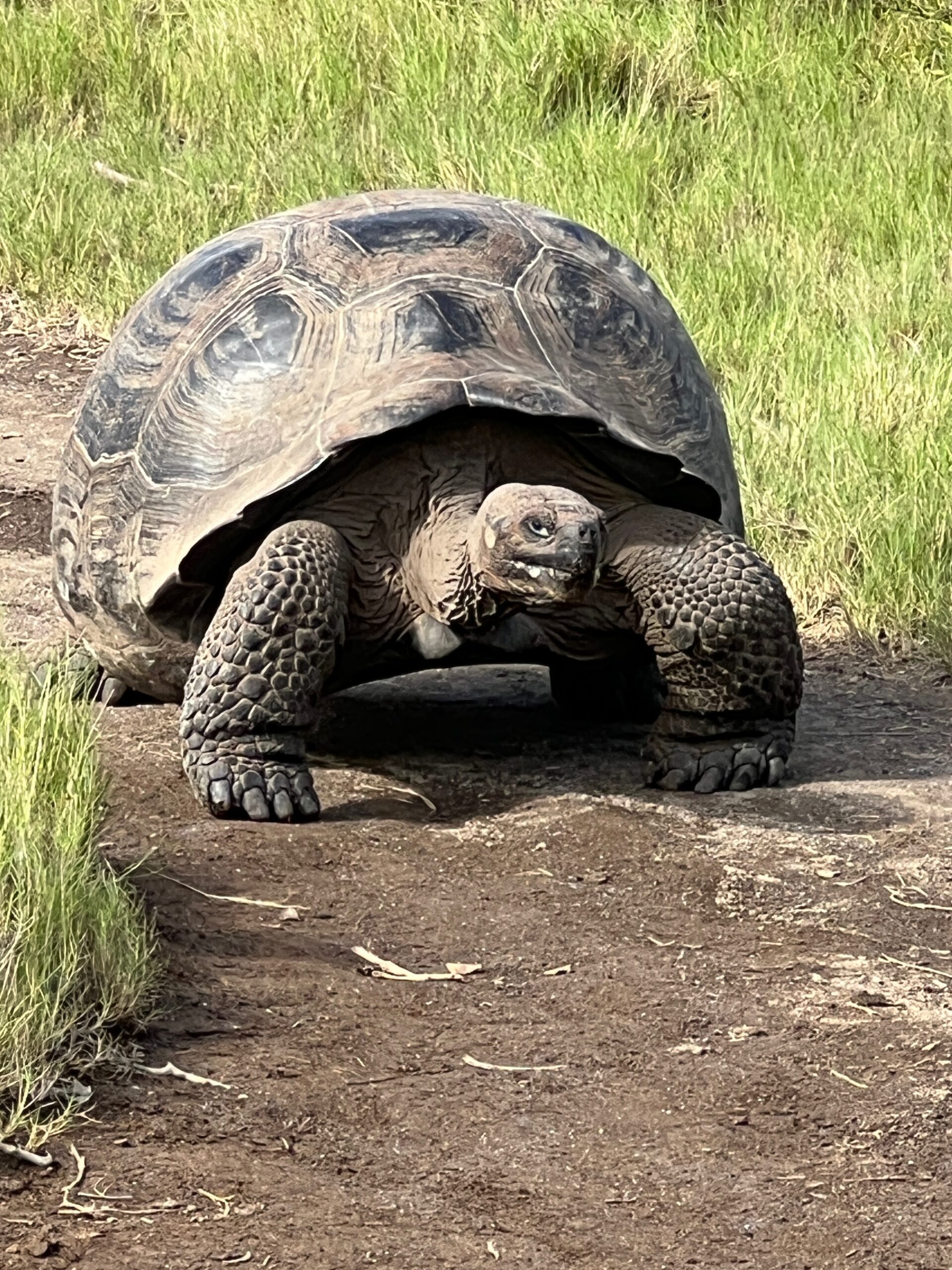The island of Isabela is the largest in the Galapagos archipelago, shaped like a seahorse and boasting five volcanoes. Our first stop was also our first look at the giant tortoises and land iguanas.
There are two kinds of giant tortoises in Galapagos, and some sub species of the two. But their distinguishing characteristics are the shape of their shells. Evolution is an amazing thing; the tortoises that eat from the ground have a dome shaped shell as their necks need to reach down, and those that must reach up for higher growing prickly pear cactus have a saddle back shell, with an arch over their necks to allow the upward reach required to feed. Our walk on a narrow path on Isla Isabela was like entering the tortoise highway. They have poor eyesight and worse hearing, so they rely on their sense of smell. A tortoise on the move caused the naturalist guide to line us up on the edge of the path so it could easily pass, but not before giving many of us a good sniff. These were youngsters, in their 40’s, which was evident by the defined rings on their shells. Old tortoise shells have rings that blend together, and they are a LOT bigger.
We got to see land iguanas with their gold coloring, one in particular sleeping in the middle of the path. His position with one foot flung out reminded me of a teenager twisted up in his sheets that could sleep through anything.
We also started seeing Darwin’s finches and yellow warblers. There are 17 recognized finches, all, according to DNA testing, evolving from a single species, and recognizable by the shape of their beaks. Ground finches have heavy beaks, which they use to crack open large seeds, while cactus finch eat the nectar from cactus flowers and its fruit and seeds, and has a longer, thinner beak. Some are vegetarian, and some eat insects.
As the Galapagos Islands were formed by volcanic activity there was lots of lava rock and beautiful formations and caves near one of the calderas on Isabela. There in the shallow waters we saw sea turtles and mullet, and on the rocks we saw more marine iguanas, frigate birds, pelicans, blue-footed boobies, brown noddies with their grey caps, and flightless cormorants with their tiny almost pathetic wings. No need to fly when you have no predators and can swim and dive and find plenty of fish! I was interested in hearing that marine iguanas drink seawater and expel the salt. By sneezing. It’s actually quite funny to watch a colony of them and see the salt sneezes every few minutes.
Another beautiful sunset and another day of exploration to come!
Up Next – Plaza Sur, or South Plaza Island



Loved the head-on tortoise collision… That was worth the entire trip, right there.
But wait, there’s more!
D. ❤️